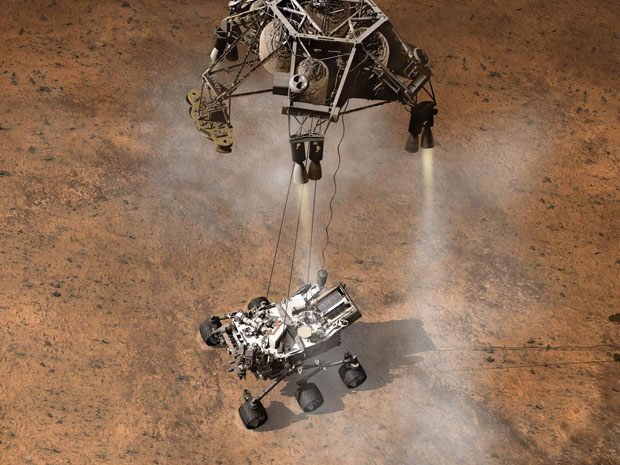This guest post is by Roger Duthie, Doctoral Candidate in Space Plasma Physics at the Mullard Space Science Laboratory.
In the late 1970s, Nasa’s Voyager probes began an epic journey through the solar system to explore the outer planets (Jupiter, Saturn, Neptune & Uranus). The “in-situ” measurements sent back from Neptune and Uranus by Voyager 2 are still the only local observations of the magnetospheres of these ice giants. But what is so very special and unique about the Voyager missions is that they are still operational over 35 years on and they are heading out of the solar system into new territory within our galaxy (the Milky Way) at large.
The solar system of eight planets, plus many minor planets, asteroids and comets, is bathed in plasma ("solar wind") streaming outwards from our single, central star (the Sun). The Sun also provides a magnetic bubble in the form of the heliosphere, much like the magnetosphere which Earth possesses. The Earth's magnetosphere is the region around the planet where its' magnetic field dominates, and to some extent it protects the Earth from the impinging solar wind; the heliosphere plays the same role for the entire solar system, diverting the plasma of our galaxy's interstellar medium (the ISM). Where we are able to extensively probe and measure the structure of the Earth's magnetosphere and interaction with the solar wind with satellites and even observations made from the ground, the outer reaches of the heliosphere are the sole domain of the Voyager spacecraft. It happens that they are both heading out towards the 'nose' of the heliosphere, one into the northern part and one to the southern. The nose is the direction facing upstream within the flow of the ISM; in the downstream direction is the heliosphere's tail.
In the late 1970s, Nasa’s Voyager probes began an epic journey through the solar system to explore the outer planets (Jupiter, Saturn, Neptune & Uranus). The “in-situ” measurements sent back from Neptune and Uranus by Voyager 2 are still the only local observations of the magnetospheres of these ice giants. But what is so very special and unique about the Voyager missions is that they are still operational over 35 years on and they are heading out of the solar system into new territory within our galaxy (the Milky Way) at large.
| NASA's Voyager probes are the furthest man-made items from the Earth. Image Courtesy NASA/JPL-Caltech. |
 |
| The Earth's magnetosphere is also important for keeping ahold of the planet's atmosphere. Image credit: ESA |















